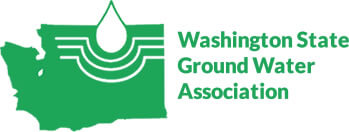
Petroleum Companies Ordered To Monitor Aquifer Contamination
30 March 2000, SPOKANE — Three corporations have received an enforcement order to ensure that contaminated groundwater in the Hillyard area of Spokane continues to be monitored while clean up gets underway at the North Market Street site.
The Washington Department of Ecology (Ecology) issued the enforcement order to Chevron Pipeline Co., Phillips Petroleum Co., and Tosco Refining Co.
“It’s crucial that the companies responsible for the contamination continue to monitor the groundwater and the vapor from soil,” said Flora Goldstein of Ecology’s toxics cleanup program in Spokane. “That’s the only way we’ll get the information we need to measure cleanup progress along the way. We absolutely need to continue this monitoring work.”
Dissolved gasoline, diesel and heavy oil contamination has been identified in the Spokane Valley aquifer beneath the site at levels above established safe limits.
The North Market Street site was developed in the late 1930s as an oil refinery complex. By the late 1940s the refinery complex had an estimated daily output of approximately 314,832 gallons of refined petroleum products. Waste management practices common during that era resulted in spills to the environment of liquid petroleum from the refinery operation.
Although refinery operations were discontinued in 1953, the Tosco Spokane Terminal still supplies the Spokane area with refined petroleum products, primarily automotive fuels.
The Tosco Spokane Terminal has an estimated capacity of approximately 391,500 barrels or 16.4 million gallons. Please see Editor’s Note.
At least two spills of petroleum products have occurred at the Tosco Terminal since 1976, contaminating the groundwater in the Spokane Valley-Rathdrum Prairie sole source aquifer.
In 1984, state officials sampled three private water supply wells in the area and confirmed that groundwater was contaminated by petroleum. The wells were shut down and Ecology began supplying bottled water until an alternative source was developed.
In 1990 the U.S. Environmental Protection Agency listed the North Market Street Site on the federal Superfund National Priorities List of hazardous waste sites requiring cleanup. Ecology assumed the lead to direct cleanup under the authority of the state’s Model Toxics Control Act (MTCA).
Studies show petroleum hydrocarbon contamination is present near the surface of the soil down to the water table or about 150 to 170 feet below ground surface. Petroleum chemicals in groundwater are detectable over a distance of about one-mile.
Ecology and the three corporations responsible for the contamination are beginning negotiations to develop and implement a plan to clean up the soil and groundwater.
Editor’s Note: For comparison, the proposed Burlington Northern Santa Fe fuel depot in Hauser, Idaho would have a 500,000 gallon capacity.
